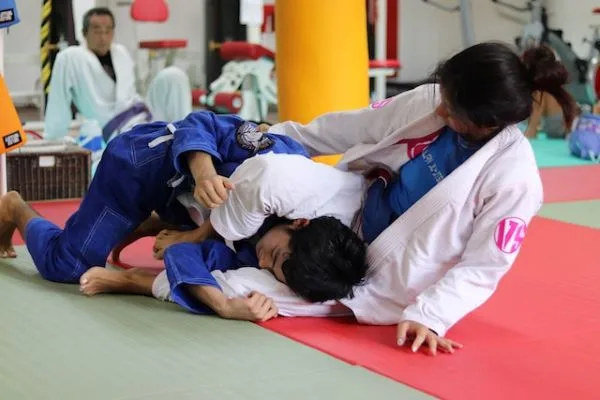Interesting Facts You Didn’t Know About Brazilian Jiu-Jitsu

Brazilian Jiu-Jitsu (BJJ) is a martial art and combat sport that has gained worldwide recognition for its effectiveness in self-defense and competition. Originating from the Japanese martial art of Judo, BJJ has evolved into a unique discipline known for its emphasis on ground fighting and submissions. In this blog post, we will explore some lesser-known facts about Brazilian Jiu-Jitsu, shedding light on its history, techniques, and cultural impact.
The Gracie Family Legacy
BJJ owes much of its popularity and development to the influential Gracie family. The dynamic journey of Carlos and Helio Gracie laid the foundation for the art as we know it today. Carlos Gracie, along with his brothers, adapted Judo’s techniques to create a new martial art that focused on leverage and technique rather than relying solely on physical strength. However, it was Helio Gracie who truly revolutionized BJJ. Due to his smaller stature and frail health, Helio had to adapt the techniques to suit his physical limitations, which gave birth to the concept of leverage-based movements and positions. This philosophy made BJJ accessible to people of all sizes and strengths, making it a groundbreaking development in martial arts.
Brazilian Jiu-Jitsu in Mixed Martial Arts (MMA)
BJJ has played a transformative role in the world of mixed martial arts (MMA). In the early days of the Ultimate Fighting Championship (UFC), the effectiveness of BJJ techniques was demonstrated by members of the Gracie family. Despite being physically smaller than their opponents, the Gracies showcased the power of BJJ by using leverage, positioning, and submissions to dominate their adversaries. Their success revolutionized MMA, as fighters from various disciplines began incorporating BJJ into their training. Today, BJJ remains a cornerstone of MMA, with many top-level fighters possessing a strong foundation in the art.
The Mental Benefits
It is clear that Brazilian Jiu-Jitsu is a highly effective martial art, but its practical benefits extend beyond physical combat. As noted in a beginner’s guide to Brazilian Jiu-Jitsu, beyond the physical aspects, BJJ offers numerous mental benefits to its practitioners. Training in BJJ requires intense focus and concentration. The complex nature of techniques and the need to adapt to rapidly changing situations on the mat demand mental acuity. This cultivates mental resilience, problem-solving skills, and the ability to think strategically under pressure. The discipline and commitment required in BJJ training also extend to other areas of life, promoting self-discipline, goal-setting, and time management. Moreover, BJJ training fosters self-confidence as practitioners develop a deeper understanding of their capabilities and gain proficiency in defending themselves effectively.
The Influence of Judo
BJJ traces its origins back to Judo, a Japanese martial art developed by Jigoro Kano. Mitsuyo Maeda, a master of Judo and a student of Kano, played a significant role in the development of BJJ. In the early 20th century, Maeda traveled to Brazil, where he taught Judo to the Gracie family. However, Carlos and Helio Gracie went on to adapt the techniques to suit their needs and created what is now known as Brazilian Jiu-Jitsu. While BJJ retains some elements of Judo, such as throws and takedowns, its focus on ground fighting and submissions sets it apart as a distinct martial art.
The Importance of the Gi
The gi, a traditional uniform worn in BJJ, plays a crucial role in the art’s training and techniques. Made up of a jacket and pants, the gi provides multiple strategic advantages to practitioners. First, the gi allows for various grips and controls, enabling practitioners to manipulate and control their opponents more effectively. Gripping the gi sleeves, collar, or pant legs offers leverage and control over an opponent’s movements. Second, the gi simulates real-world clothing scenarios, where an attacker’s clothing can be used to gain control or apply submissions. This practical application enhances the complexity and technicality of BJJ techniques, making the gi an essential aspect of training.
BJJ and Women’s Empowerment
In recent years, BJJ has experienced a significant increase in female participation. This rise can be attributed to the practicality and inclusivity of the art. BJJ levels the playing field, enabling individuals of all sizes and strengths to excel. For women, BJJ provides a valuable means of self-defense and empowerment. By learning techniques that leverage an opponent’s strength against them, women can develop the skills and confidence to protect themselves in real-world scenarios. BJJ also creates a supportive and inclusive community, fostering a sense of belonging and camaraderie among female practitioners.
Brazilian Jiu-Jitsu is a martial art with a rich history, practical self-defense applications, and a thriving global community. From its roots in the Gracie family legacy to its practicality in self-defense, BJJ continues to captivate martial arts enthusiasts worldwide. The influence of Judo, the significance of the gi, the belt system, and its impact on mixed martial arts all contribute to the unique allure of BJJ. Moreover, the mental benefits, empowerment of women, and the sense of community fostered within the global BJJ network further exemplify its cultural significance. Whether you seek self-defense skills, personal growth, or a supportive community, Brazilian Jiu-Jitsu offers a path that combines physical prowess with mental fortitude. Step onto the mat, immerse yourself in this fascinating world, and discover the transformative power of Brazilian Jiu-Jitsu.




